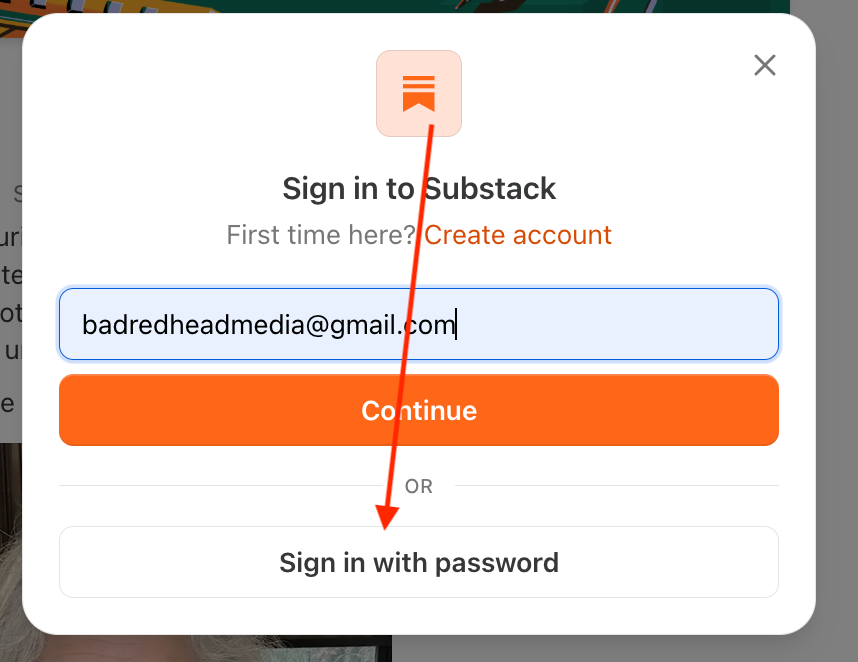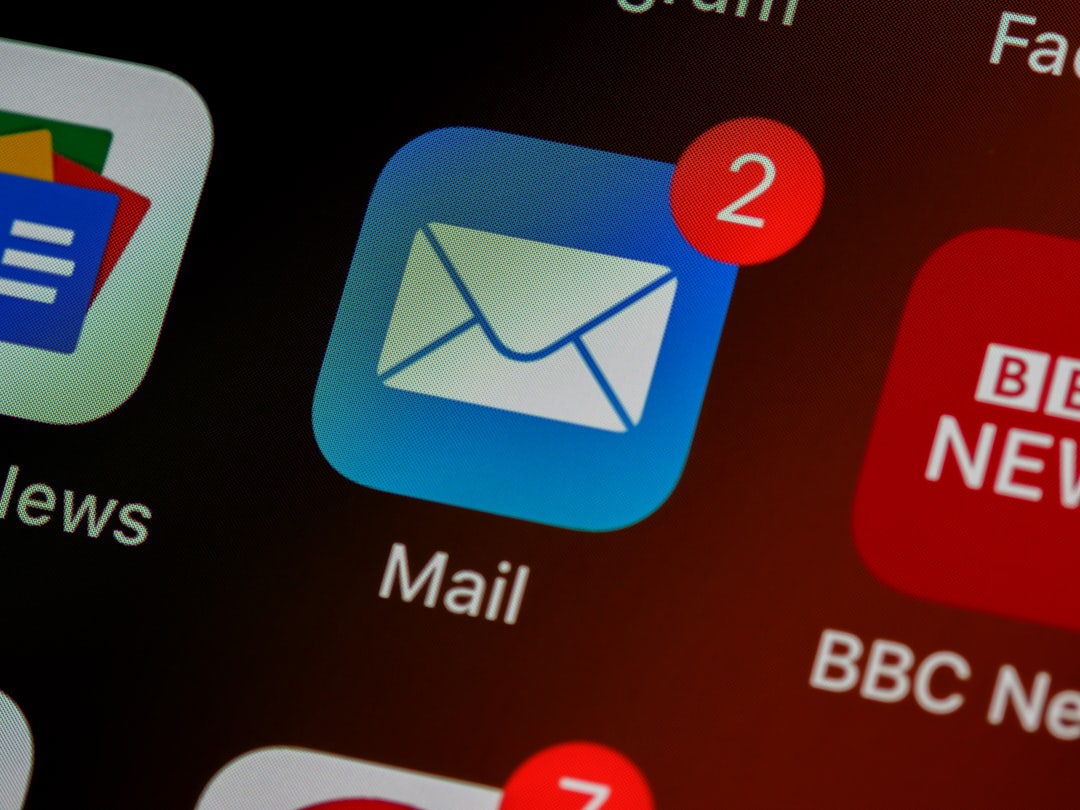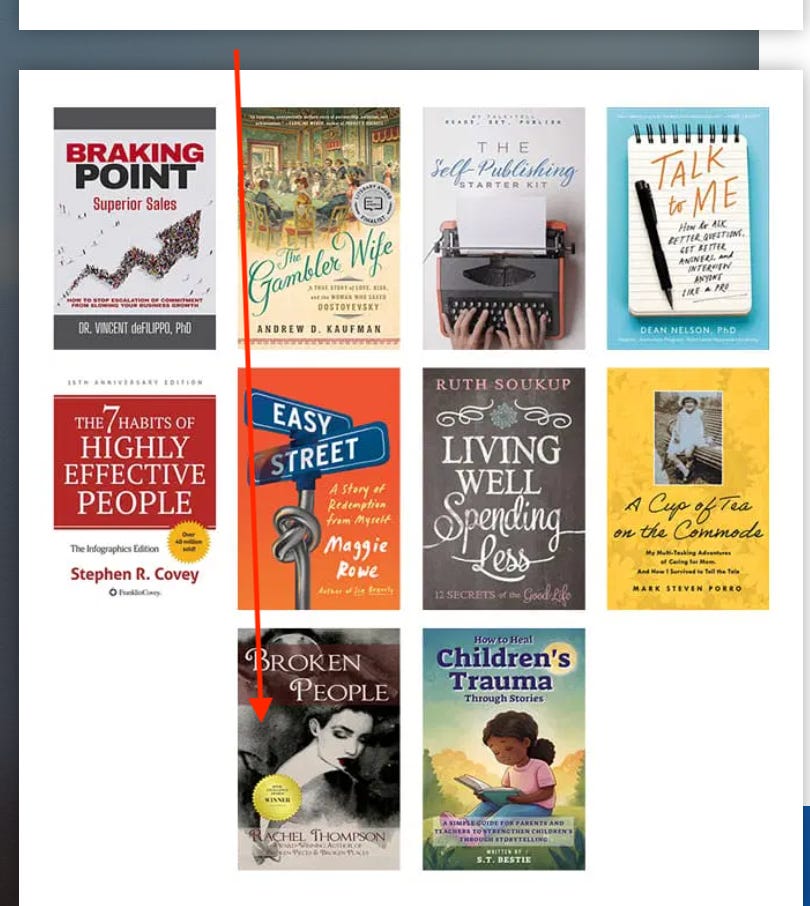Simple Steps to Substack Success (Even if You're a Complete Beginner)
Real strategies from my experience, plus lessons from top Substack creators.

If you’ve been with me for a minute, you’ll know I try everything first and then share the results. This is how I use Substack. Your mileage may vary.
Also, what is success to you? For most, it’s paid subs. I’d like to, however, focus simply on the basics first. Worry about all that stuff later.
Did you read my previous post about Substack growth? ⬇️
This post is divided into three sections: how to start, how to interact, and how to grow.
💥 Shout-out to my exclusive advertising sponsor, the always-free Booklinker (universal book links—so helpful!), and the paid tool, GeniusLink. I love both💥 (affiliate link).
Before We Dive In: Why Substack Works So Well
One of the best aspects of Substack is that it isn’t just a newsletter platform. It’s an all-in-one ecosystem.
Think of it as a three-pronged format:
You have the subscriber part (newsletters that go to email subscribers),
The website part (your posts that live on the Substack app - no subs, no problem),
And the social media part (Substack Notes).*
*You can also do audio and video, but we’ll save that for another day.
Newsletter. Every post lands directly in your subscribers’ inboxes. No algorithms deciding who gets to see it.
Blog. Every newsletter also lives on the Substack site/app, giving me a searchable, SEO-friendly archive. No subs yet? This option is great for you.
Website. I can use my Substack homepage as a simple author website, with an About page, a call to action, and links to my books and services. I still have a website, but there’s also fantastic real estate here. Use it.
Social Media. Substack Notes let me connect casually between posts. It’s like Twitter without the noise and drama.
This mix of reach, visibility, and community means I don’t have to juggle five different platforms just to connect with my readers. So, the first question is always the same: How to even start?
1. How to Start: Building a Strong Foundation
Think of starting your Substack like opening a cozy bookshop. We don’t need every shelf filled on Day One, but we do need a clear sign over the door and a warm welcome when readers walk in. Maybe a cat. Definitely a cat.
Open an account. You don’t have to post anything, or set up tiers, or anything scary. Create an account to access the backend dashboard. You can also start reading Stacks—pay attention to what you like/dislike for your own.
Tip: After creating your account, you might find signing in confusing. You add your email, click Continue, then enter your password. A code is generated and sent to your email.
Don’t do that. Simply click on ‘Sign in with password’ instead, enter your password, and the app opens right up. Saves you the trouble of entering a code each time.
Here’s what has worked for me:
Clear niche. What is your purpose? I write for authors seeking practical, no-BS marketing advice. That’s my lane. If I start posting about cookies, you’d wonder what the heck was going on. Is Rachel alright? (Though I do love cookies. Feel free to send.)
Recognizable branding. My purple-and-red vibe, Pip the cat, and slightly cheeky tone make this newsletter mine.
Repurposing content. I use my existing author marketing guides, Twitter challenges, and blog posts as a foundation. Repurposing isn’t lazy. It’s smart.
👉 Here’s an example of how I repurpose content ⬇️
2. How to Interact: Turning Readers into Community
The real magic of Substack happens after I hit publish. Engagement isn’t an afterthought, writer friends. It’s the heart of it.
I often ask questions at the end of my posts, something simple like, “What’s one marketing tip that helped you this week?” When someone comments, I respond like a human, not a brand bot. Over time, that’s turned subscribers into a community, not just a list.
Here’s how I keep conversations going:
Comment prompts. Culture Study by Anne Helen Petersen does this beautifully. Thoughtful questions spark smart replies.
Substack Notes. Substack Notes is my way to connect between posts, share new posts, or Pip, The Book Marketing Cat. It’s quick, conversational, and way less chaotic than TikTok, IG, or Twitter.
Highlighting reader voices. Pinned or featured comments help amplify good ideas and show readers their voices matter.
Tip: If you use Geniuslink, you can track all the clicks to your posts. Where are your clicks coming from? We have analytics here, but I really like what Geniuslink offers.
I can see from a previous post that I received 345 tracked clicks (not all clicks are tracked), from eight countries, primarily from Facebook.
This shows me where clicks are coming from—clearly, Facebook is where the majority of my readers come from, so that’s where I spend any advertising money when I can.
3. How I Grow: Expanding Without Selling My Soul
I’ve learned growth isn’t about chasing numbers. It’s about finding the right readers, those who open, read, share, and stay.
A few strategies that have worked for me:
Cross-promotion. Collaborate with other Substackers through Notes and shared links. Fresh readers who are already interested in my kind of content show up. When in doubt, be generous. Share posts and people you love. If nothing else, it’s good karma.
Smart linking. I regularly link to my own archive, like my SEO tips for authors, which keeps people exploring instead of bouncing.
Value first. I make sure my free content is genuinely useful. If people want more, they upgrade to paid because they see the value, not because I hard-sell them.
Recommendations. GOLD. When a reader subscribes to someone’s Substack, they’ll see a small box that says:
“This writer recommends these other publications.”
That list is created by the writer, aka YOU, who gets to choose which newsletters you’d like to recommend.
If the new reader clicks on one of those recommended newsletters, they can subscribe with one tap, without having to leave the page. It’s seamless.
The reverse is also true: if another writer recommends your newsletter, their subscribers see your name when they sign up. That’s how trust spreads on Substack.
How to Set Them Up
Go to your Substack Dashboard.
Click “Grow” on the left-hand menu.
Choose “Recommendations.”
Add the publications you genuinely want to endorse.
(Optional but smart) Reach out to those writers and let them know. Many will recommend you.
Targeted Promotions Through Written Word Media
I’ve used Written Word Media to drive targeted, high-quality traffic to both my books and my Substack. To be clear, this is not a paid sponsorship. I like the service and it’s reasonably priced.
More here about that below! 👇
Their promo platforms, particularly Freebooksy and Bargain Booksy, help me reach active readers, many of whom subscribe after downloading a book or reading a post.
I typically run promos around launches or key campaigns, then add a clear Substack CTA at the back of the book and in the follow-up email.
Giveaways That Actually Convert with BookSweeps
BookSweeps is another tool I’ve used to grow my email list and funnel readers to Substack. Instead of generic giveaways, BookSweeps enables authors to participate in genre-specific campaigns that attract genuine, engaged readers, not bots or tire-kickers.
Most importantly, these are both legit companies that work within FCC and GDPR guidelines, aka, all are opt-in.
Here’s what I do:
I participate in genre-specific list-building giveaways where my target readers are already active. Here’s one that’s live right now! Click to enter to see the process for yourself.
When the giveaway ends, I send an email with a link to my Substack and a “Why you’ll love it here” message.
I also get about 500 to 1000 new subscribers who opt in every month or so, and I upload their information here. Not sure how to import existing subs? More here. Super easy.
Other creators use similar strategies:The Audacity by Roxane Gay uses exclusive essays and community features to turn readers into loyal subscribers.
The Dispatch leans on tiered memberships and community-building perks.
Self Publishing with Dale shares practical tips and lessons on indie author stuff.
My personal growth playbook:
End every post with a clear CTA (e.g., sign up).
Repurpose my posts across other social media with smart hooks.
Integrate promotional features to attract readers who already love books, making conversion to Substack feel natural rather than forced.
🧾 TL;DR / To-Do Checklist
If you skimmed (no judgment), here’s what to focus on:
✅ Start strong
Define your niche.
Brand your voice and visuals.
Repurpose what you already have.
✅ Build real interaction
End posts with a question.
Use Substack Notes to stay present between newsletters.
Pin and highlight thoughtful reader comments.
Engagement tips.
✅ Grow with intention
Link back to your own posts to keep readers exploring.
Cross-promote with creators in your niche.
Run promos with Written Word Media and BookSweeps to bring in the right readers if you can.
Written Word strategy + BookSweeps results.
✅ Don’t forget the CTA
Remind readers why they should subscribe.
Keep it clear, kind, and consistent.
📬 Final Nudge:
Subscribe to BadRedhead Media for practical author marketing tips, storytelling strategies, and real talk about building your creative work into something sustainable. Like this post? Please share! Thank you.
How does this info help you? Please share. Thank you for reading, and happy writing!








This was a SUPER helpful post, as I've been thinking about starting to work on branding through substack. I will definitely be referring back to this on he future!!
Thanks so much for this post. I'm here from Medium and honestly, I'm finding it difficult. The settings menu is both exciting AND terrifying. This was a great read and really helped me to understand just exactly what Substack is about. Sunscribed. V x